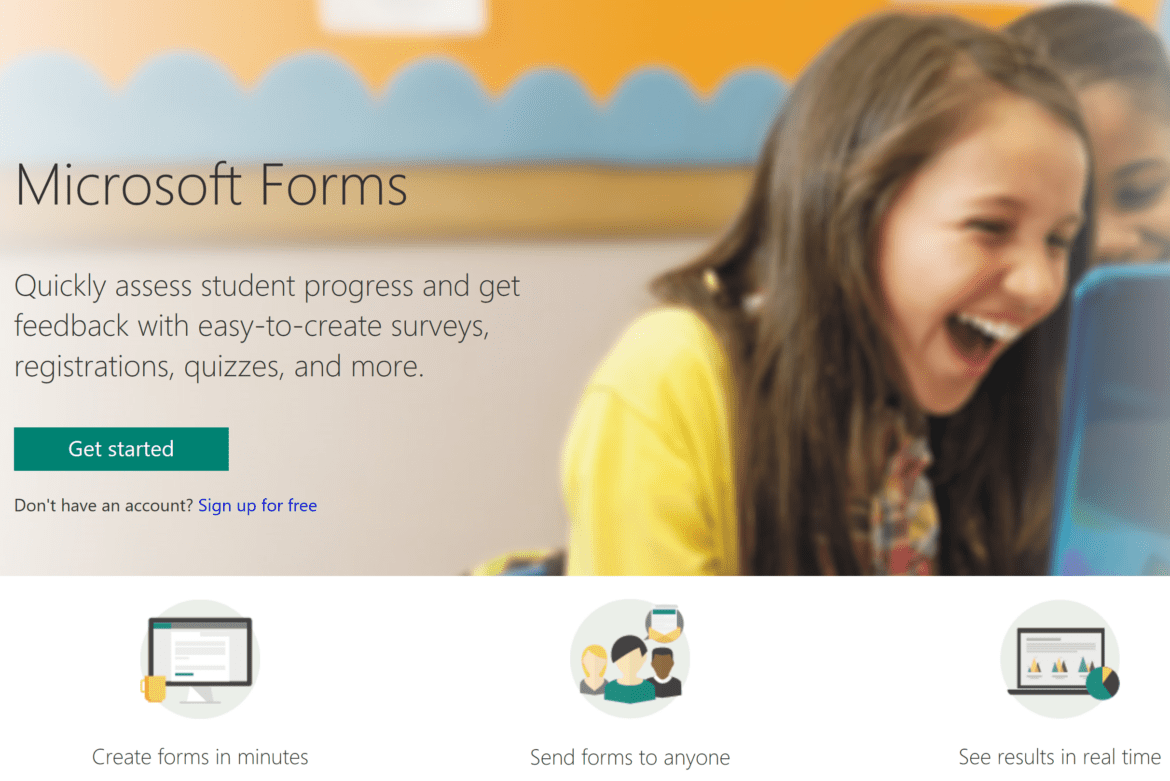Dump those old paper rubrics and flip the learning! Empower yourself and your students to use Microsoft Forms for the quick evaluation of academic work. This makes grading easy and simplifies the process for students. In fact, it can create a culture of collaboration and self-assessment. Let’s explore some ideas for using Microsoft Forms, as well as review Forms features, in the classroom and/or for professional learning.
#1 – Flip Learning
Flipped learning videos enable students to seize anytime, anywhere learning opportunities. However, a challenge for teachers and students involves deepening engagement with the video content. While tools like EdPuzzle and Flipgrid offer built-in assessments and video responses, respectively, they are also more involved than simply filling out a form.
#2 – Check for Understanding
With Microsoft Forms, you are able to gain insight into students’ engagement with a video or online activity, including flipped learning videos. Here’s the process you can follow:
- Create a Microsoft Form.
- Embed a YouTube video, image (such as a Powerpoint slide with information or diagram), or Office Mix.
- Pose questions that check for understanding about the video.
- Students complete the questions as they watch the video.
You can review student submissions, as can students, depending on the goal of the check for understanding. Some also rely on Microsoft Forms to create exit tickets. “Exit tickets can be a great way to set up the next day’s learning,” says Diana Benner (@diben). “Before students leave class, they can be asked for an ‘exit ticket’ that provides insight into what they learned from the day’s activities.”
#3 – Empower Students to Create Rubrics
Make it possible for students to collaborate and create their own rubrics for class projects. Not only do you create a culture of teaming, but students will experience a model, purpose-driven learning.
#4 – Remember Awesome Failures
Tracking success can energize learning, while tracking failures can kickstart new directions and possibilities. Use Microsoft Forms to create a digital
space where students and teacher(s) share what did not work and why. When learning new ideas and implementing projects, sharing how you have failed can be an effective motivator.
Having these awesome failures relevant to projects over time can help map out roadblocks and detours that students can take. Create a virtual failure space with Microsoft Forms to capture incomplete implementations or partial success. Model the use of this with your students.
#5 – List Learning Take-Aways
“What are the most important takeaways from today’s lesson or reading?” Microsoft Forms can facilitate the list that results from this kind of prompt. Combine this approach with soliciting feedback from the community. As students work on a project, post their works in progress (video or photo) and then invite community members you trust to share their suggestions.
Getting Started with MS Forms
To get started with MS Forms, all you need is an Office 365 account, which is available through your school district or free. Let’s walk through the steps:
- Get an Office 365 account for free.
- Add a new form.
- Select the type of questions. You have several choices such as Multiple Choice, Quiz, Text, Rating, Date.
- Type your question or add media (e.g. YouTube video, image).
- Publish the form to others in your organization or anyone with the link.
To better understand the possibilities, here is a list of MS Form features.
Creating a Survey
- Requires an Office 365 account (free)
- Multiple question types, including Choice, Quiz, Text, Rating, and Date
- Easily embed YouTube video or images in the question text
- Add subtitles (in case you want more instructions; media adding isn’t available for subtitles)
- Option to shuffle responses
- Add question to Quiz computation
- Add “Other” to available responses
Organizing Questions
- Adjust theme to reflect color of choice or available background image
- Preview form using built-in desktop or mobile view
- Re-order questions using up/down arrows
- Copy/duplicate question
- Delete or “trash” question
- Branching dependent upon response chosen to a particular question
Sharing Form and Viewing Results
- Share form online via copy link, email, QR code download, or web page embedding
- Copy link to MS Form and then paste it into OneNote 2016 to embed form for student use
- Make it easy to track those who complete the form in your organization or make it available sans tracking for anyone with the link.
- Save results as an Excel spreadsheet. After all the responses have been gathered, use Excel to add formulas and sort the data in order to analyze it.
Opening/Closing Form for Completion
- Set start/end dates at specific times for when the MS Form is opened or closed for completion.
- When form is NOT accepting responses, create a custom message as to why.
- View/delete/print individual responses or summary responses in aggregate form with graphs.
- See what the average completion time is for the Form.
Also, each question has individual options that you can take advantage of. For example, the Rating question type includes the ability to assign labels. With the Rating question type, you can switch between stars (e.g. 5 stars for great!) or numbers (e.g. 1-5, with 5 being the best).
Conclusion
As you can see, MS Form boasts an extensive list of easy-to-use features. Combine it with one of the five approaches mentioned above to engage learners in your Office 365 classroom. If you are already creating rubrics, exit tickets, or awesome failure walls in Microsoft Forms, I’d love to hear from you! Share your examples with me at @mguhlin on Twitter or mguhlin@tcea.org via email.

